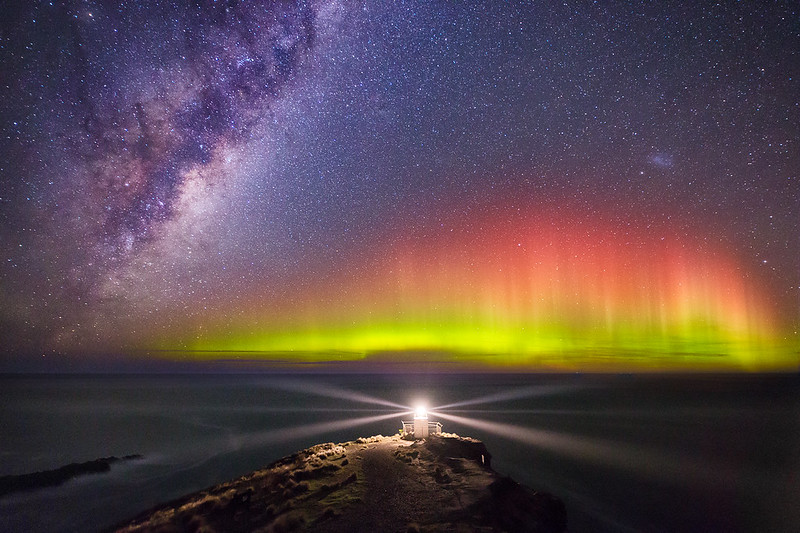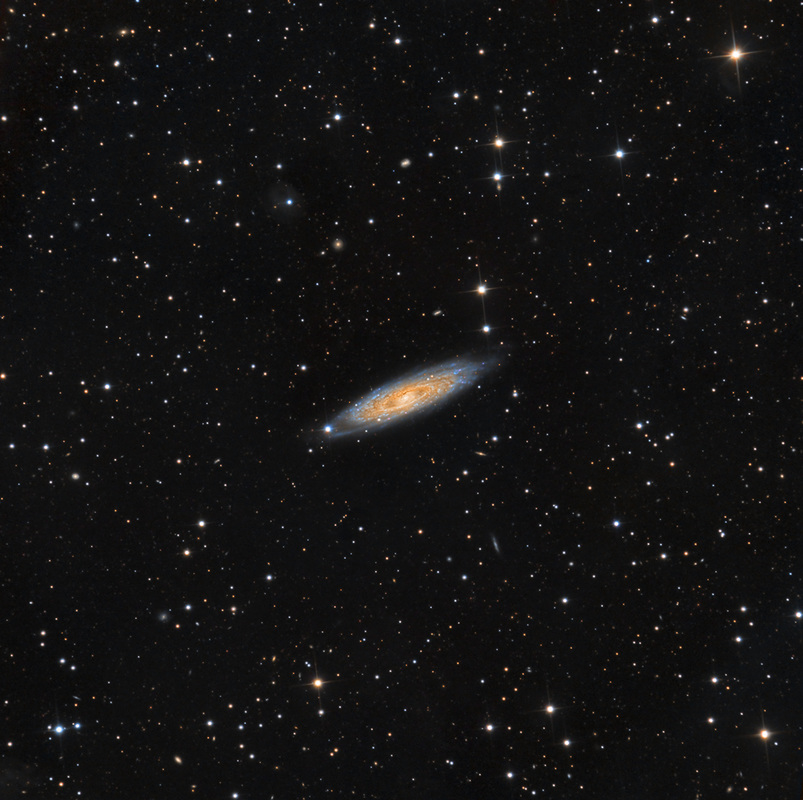THE GREAT ORION NEBULA IN HIGH RESOLUTION BY THREE TELESCOPES AMATEURS
This image is the result of the efforts of three astrophotographers, Miguel Angel García Borrella, Antonio Pérez Ambite y Luis Romero Ventura, that using different equipment from their observatories located hundreds of kilometres away have chosen a common target to render the Orion Sword area (one of the most beautiful areas of our night sky) with the highest possible resolution and signal level.
Luis and Miguel Angel have contributed with high resolution images of the Great Orion nebula and the Running man nebula and Antonio with the magnificent field surrounding both nebulas. Miguel Angel has also contributed with a higher resolution image of the Trapezium composed by very short shots with a Takahasi Mewlon 250 telescope.
For all this work four remote observatories have been involved, gathering images during more than two months: The Astrosirius Observatory in Ager -Lleida-, The Hyperion observatory in Caraquiz -Guadalajara- , Observatory SPAG Monfragüe in Caceres Observatory e-EyE in Fregenal de la Sierra- Badajoz.
The project was to create an image with different equipments with the highest possible resolution and with the highest possible resolution and signal level to render one of the most beautiful areas of our skies. In this crazy idea three astrophotographers were invloved, Miguel Angel García Borrella,
Antonio Pérez Ambite and Lluís Romero Ventura.
Miguel and Lluís contributed the high resolution images of the Orion sword, and Antonio the magnificent field that surrounds the main ensemble. With it the objects in the final image are rendered deeper. It should be noted that the Antonio's Observatory is located 50 km away from Madrid, which means that the sky conditions are not optimal, due to light pollution.
The high resolution image of the Trapeziun area was taken with a Mewlon 250 from Takahashi, with very short exposure times, to avoid saturating the nebula core. In all this process, 4 remote observatories were involved, gathering images during more than two months, collecting the maximum possible signal taking into account the poor climatology and lunations: The Astrosirius Observatory in Ager -Lleida-,The Hyperion observatory in Caraquiz -Guadalajara- , the SPAG Monfragüe observatory in Caceres and the e-EyE Observatory in Fregenal de la Sierra- Badajoz, which contributed with the trapezium.
The final image is the result of assembling all six tiles, four of them with the same exposure times in all channels (L-RGB) but with two different telescopes, one to define the Trapezium and surrounding area, with Very short integration times in the Ha and RGB channels and, finally, hundreds of wide field images using medium exposure times that helped to resolve the dust clouds that surrounds the objects that compose the Orion Sword area.
At the end, the best tool of each processing program was used, and dozens of final images were processed during three months, to obtain the best resolution and colour of each one.
The total amount of integrated images were 808.
Details Data:
Place: Monfragüe-Cáceres-Spain // Àger-Lleida-Spain // Caraquiz-Guadalajara-Spain
SQM: 21.7 Average
Dates: From November 2016 till January 2017
Telescopes: ODK 16 f76.8 // Takahashi Mewlon 250 f/11 // GSO RC14 Truss // ASA N10
Mounts: TITAN 50 LOSMANDY // ASA DDM85 // ASA DDM85
Cameres: SBIG STL 11000 C2 /AOL // Moravian G3-11000 // FLI 16803
Exposure nebula x4 Mosaic HR: L: 21x900 sec bin1 // RGB: 21x900 sec bin1 // Ha: 21X1 sec bin1
Exposure nebula Surrounding: L: 340x300 sec bin1 // RGB: 100x300 sec bin1
Exposure Trapezium: L: 110x1 sec bin1 & 40x60sec bin1 // RGB: 40x60 sec bin1 // Ha: 10x600 sec bin1
Processing: Photoshop Cs6, MaximDL
Software: CAP5, The SKY6, pixinsight, CcdStack, Sequence ASA, CCD Commander.
Control Remote:Talon6 ROR
Copyright by:
Antonio Pérez Ambité:
https://www.datsi.fi.upm.es/Hyperion/astronomia.html
Miguel Ángel García Borrella:
http://observatoriosspag.es/index.htm
Lluís Romero Ventura:
http://astrophotographysirius.com/




